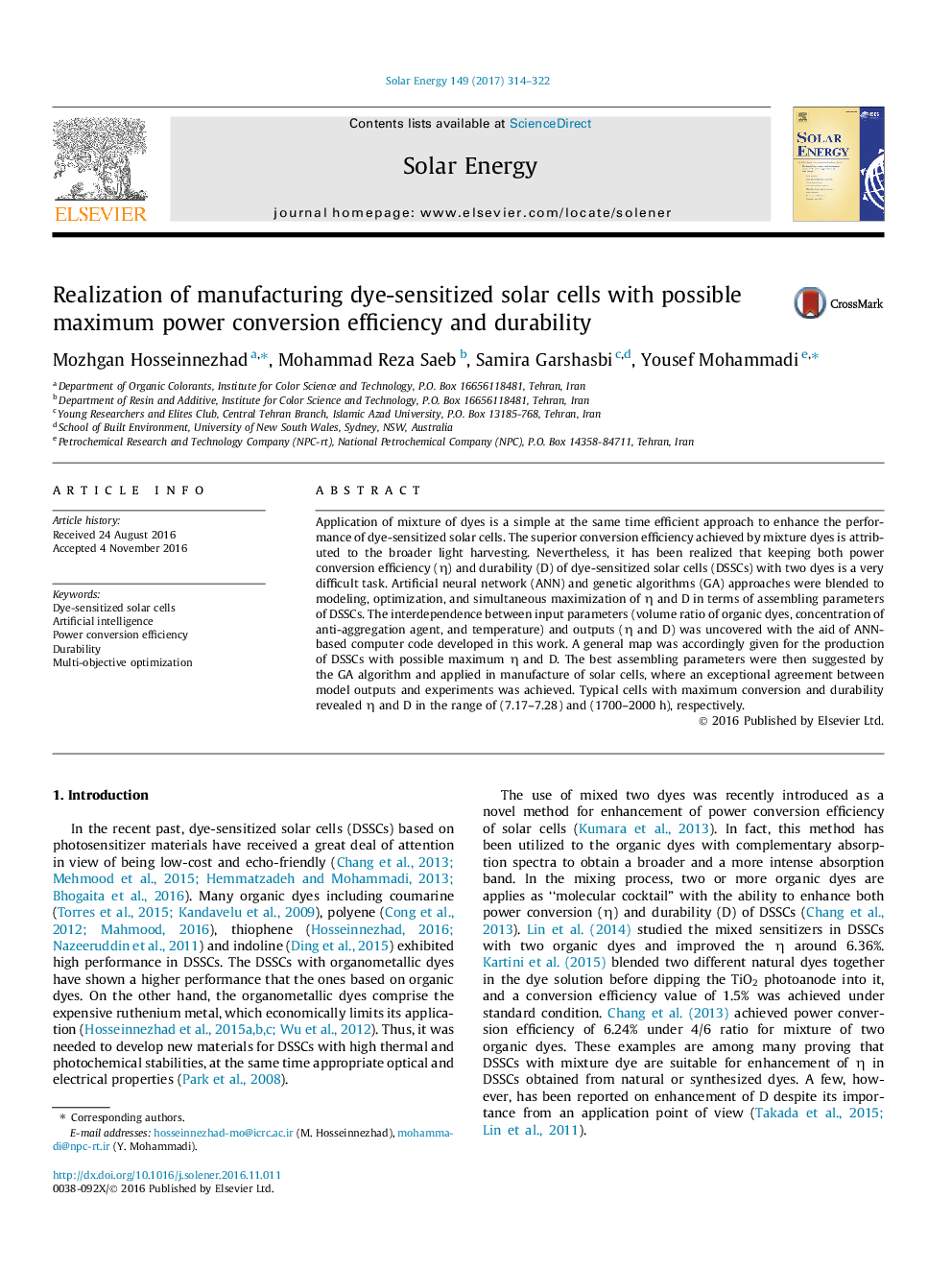| Article ID | Journal | Published Year | Pages | File Type |
|---|---|---|---|---|
| 5451088 | Solar Energy | 2017 | 9 Pages |
Abstract
Application of mixture of dyes is a simple at the same time efficient approach to enhance the performance of dye-sensitized solar cells. The superior conversion efficiency achieved by mixture dyes is attributed to the broader light harvesting. Nevertheless, it has been realized that keeping both power conversion efficiency (η) and durability (D) of dye-sensitized solar cells (DSSCs) with two dyes is a very difficult task. Artificial neural network (ANN) and genetic algorithms (GA) approaches were blended to modeling, optimization, and simultaneous maximization of η and D in terms of assembling parameters of DSSCs. The interdependence between input parameters (volume ratio of organic dyes, concentration of anti-aggregation agent, and temperature) and outputs (η and D) was uncovered with the aid of ANN-based computer code developed in this work. A general map was accordingly given for the production of DSSCs with possible maximum η and D. The best assembling parameters were then suggested by the GA algorithm and applied in manufacture of solar cells, where an exceptional agreement between model outputs and experiments was achieved. Typical cells with maximum conversion and durability revealed η and D in the range of (7.17-7.28) and (1700-2000 h), respectively.
Keywords
Related Topics
Physical Sciences and Engineering
Energy
Renewable Energy, Sustainability and the Environment
Authors
Mozhgan Hosseinnezhad, Mohammad Reza Saeb, Samira Garshasbi, Yousef Mohammadi,
